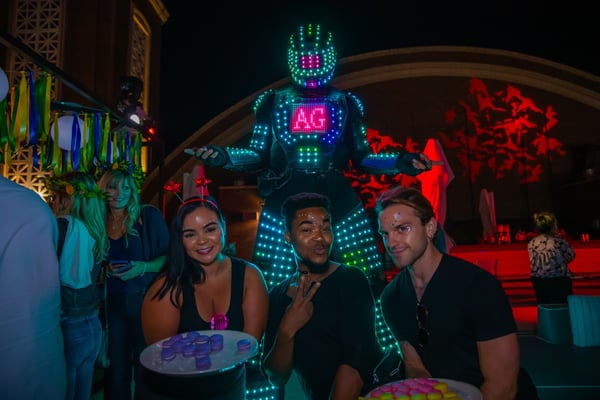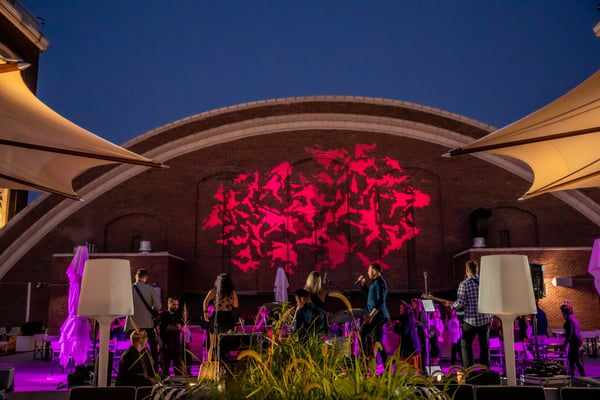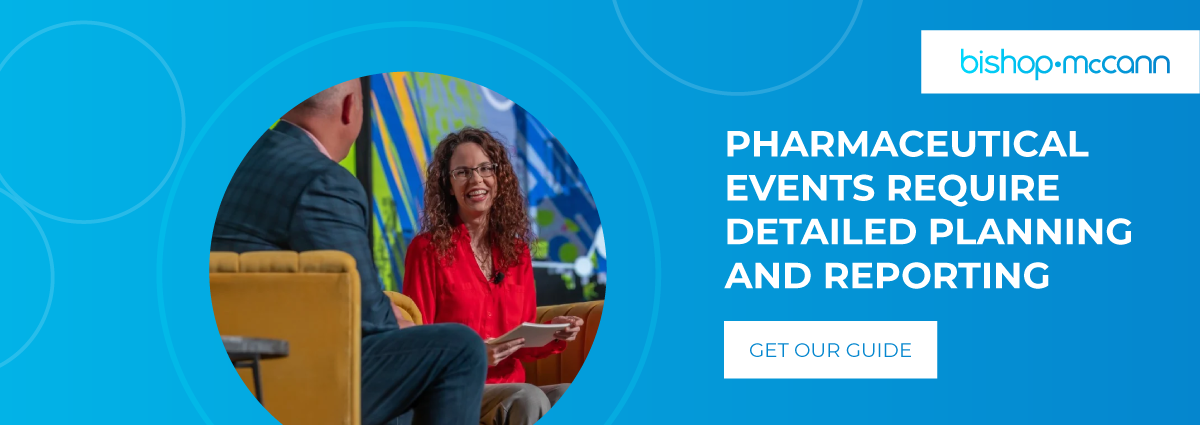 If we look back, even ten years, we can see the impact of technology on every single aspect of our lives. The pharmaceutical industry is no exception; the exponential growth of technology has changed the face of research. It helps us gather, analyze, and act on that data. The same is also true for the events industry. The way we use and leverage technology when executing events can change the host and attendee experience. And when it comes to the pharmaceutical industry, there are some specific challenges that technology can help overcome.
If we look back, even ten years, we can see the impact of technology on every single aspect of our lives. The pharmaceutical industry is no exception; the exponential growth of technology has changed the face of research. It helps us gather, analyze, and act on that data. The same is also true for the events industry. The way we use and leverage technology when executing events can change the host and attendee experience. And when it comes to the pharmaceutical industry, there are some specific challenges that technology can help overcome.
Quick Links
- How Event Technology Is Used for Pharma Events
- Top Challenges of Pharmaceutical Events
- How Event Technology Can Improve Pharma Events
 How Event Technology Is Used for Pharma Events
How Event Technology Is Used for Pharma Events
While pharmaceutical events are different from other corporate events in some profound ways, one commonality is the way event technology (when used wisely) can improve the event experience for both planners and attendees alike.
One might think the types of technology used will largely depend on the type of pharmaceutical event being planned. However, a national sales meeting (NSM), even with different goals and attendees than an investigator meeting, may use similar technology. The difference lies in how the technology is utilized.
For example, both types of pharmaceutical events may feature virtual or augmented reality, but with very different end goals. At a sales meeting, you might see these technologies used for entertainment purposes or perhaps even simply for the experience itself–for example, being transported to the islands in a relaxation space or zen zone. At an investigator meeting, these types of technology can be used to educate by illustrating molecular structure or how a drug will move and interact with human physiology.
Similarly, for larger meetings, one of the most significant advantages of tech is handling the flow of people. If you’ve worked at any large event, you understand how much work goes into simply moving attendees from place to place. Whether it’s employing a web-based event app in order to simplify registration or working with AI to help create voice-assisted directions and information, event technology can lighten the load on event staff when used strategically.
That’s not to say that these same tools shouldn’t be used for smaller events, but finding a way to balance the human element that creates an event experience while utilizing technology can be easier when the crowd is smaller. Knowing when, where, and how to use technology at pharmaceutical events can be a challenge.
Top Challenges of Pharmaceutical Events
As one can imagine, in highly competitive industries like pharmaceuticals, every event is an opportunity to share or gather information. Further, the type of information shared depends on who is in attendance, and with fairly diverse audiences, it can mean a variety of sessions running concurrently, a requirement to track HCPs, and a need to communicate changes and updates quickly to segmented audiences.
Any one of those issues in itself can create logistical challenges. However, when we understand that one of the primary challenges of pharmaceutical events management is the inclusion of HCPs and the need to adhere to the strict rules regarding HCP compliance, it becomes crucial to understand where people are moving and what information they’re receiving. This is one area in which tech excels.
Additionally, events at which valuable intellectual property is being shared, reported on, and discussed require access control. While savvy event planners are aware of this as they look at pharma venues and physical space (especially when considering that space needs may be as diverse as the audience), technology is also an invaluable tool here. You may need to limit access to a specific event or space, and when you have diverse attendees, this can be a challenge. Manual efforts to control access may slow things down, and you always run the risk of human error or oversight.
Finally, with the ability to relay information and to include individuals who cannot travel but must participate and interact with other attendees, it becomes exceedingly clear that utilizing event technology is an essential part of pharmaceutical event planning.
 How Event Technology Can Improve Pharma Events
How Event Technology Can Improve Pharma Events
All events come with challenges, and thankfully, technology can help with quite a few of them. When it comes to access, communication, and the movement of people, few things are more important than managing tech. Let’s take a quick look at some of the technology you can employ at a pharmaceutical meeting or event to help you create a seamless experience.
1. Event Apps
These days, event apps are fairly easy to create, and when you plan on having a series of meetings with the same goal and many of the same attendees, you can continue to build app audiences and adoption rates as the events grow in size.
Event apps allow you to communicate with different audience segments, send updates, and communicate changes or important announcements. Further, when it comes to creating ways for attendees to interact with you and other attendees, event apps help facilitate this.
2. Check-In and Registration
As we have stressed elsewhere when discussing event check-in and registration, this is your first opportunity to make an impression on your attendees. Leaving them standing in long lines unattended and unable to get to sessions on time is not the impression you want to make. Event technology can speed up and simplify the process. Further, when you pair this with staff, you improve efficiency all while providing white glove service that enhances the experience. Making a good first impression is crucial!
3 Attendee Tracking
Tracking attendees is vital for any event, but it can be especially important for pharma programs. With technology like RFID, not only can you discover where attendees are spending their time, but you can also limit access to specific areas. Another element that tech can help with is determining session popularity while identifying bottlenecks and resolving problems before they impact attendees.
4. Hybrid Capabilities
Given the nature of the pharmaceutical industry, participants may have geographical barriers that make in-person attendance difficult. Working with an event planning company that has experience in hybrid or virtual event technology is important. Events that incorporate both in-person and virtual attendees require a seamless experience that isn’t as simple as people dialing in via Zoom.
5. Data Gathering
Whether it’s post-event surveys or data gathered via AI throughout the event, you’ll need to be able to aggregate and analyze that data for actionable insights. For the pharmaceutical meeting space, there are various perceptions you’ll gather during the event regarding research, strategies, and talking points. However, when it comes to running an effective meeting or hosting an event that meets its goals, the only way to determine that success is to gather and analyze data.
There are many moving parts that go into pharmaceutical meetings and events. Having an event planning partner who understands those moving parts is crucial. From the pharma event planning process to technology expertise, Bishop-McCann is that partner. If you’re ready to start planning your next pharma program, get in touch with our team today!
